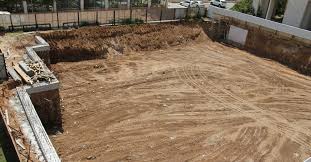
Land clearing is the first step in preparing a property for new development. Whether for a home, commercial building, or road, clearing sets the foundation for progress. Let’s explore how excavation experts approach land clearing from start to finish.
Initial Site Assessment
Before any equipment touches the ground, professionals begin with a thorough site evaluation. This step allows them to identify potential obstacles such as underground utilities, trees, uneven terrain, or existing structures. Working with a local excavation company in Leander ensures that the crew is familiar with regional soil types and environmental concerns.
Crews often walk the property with landowners or builders to discuss goals and challenges. They note everything from access points to drainage patterns. If permits are required, excavation companies can help gather the necessary documents or recommend the next steps. Knowing what to expect on the ground saves time and helps avoid costly delays later.
Clearing Vegetation and Debris
Once the plan is finalized, crews start to clear vegetation. This can include everything from tall grass and shrubs to large trees and stumps. Any recyclable material, like wood or mulch, may be set aside for reuse. Removing debris is essential before grading or building can begin.
Debris is sorted and transported to approved facilities for recycling or disposal. Larger items may require heavy machinery or specialized attachments to remove. Crews remain focused on efficiency while following environmental regulations. Each cleared site is inspected again before moving to the next step.
Equipment and Techniques Used
Land clearing requires a variety of tools, each designed for a specific task. Teams often switch between machines depending on the terrain. Here are some typical tools and techniques:
- Skid steers with grapple buckets for moving large items
- Dozers for pushing and leveling earth
- Mulchers to grind vegetation into usable mulch
- Chainsaws and hand tools for selective clearing
- Excavators for digging and root removal
- Haul trucks for debris transport
Manual tools are still used for tight spots or delicate areas near structures. Operators are trained to choose the right method for the job.
Importance of Selecting an Experienced Team
Experience matters when it comes to land clearing. Hiring a crew with years of experience in Leander means they understand local codes, terrain, and weather patterns. A team that knows how to adjust quickly and safely makes the entire process smoother.
Skilled teams use efficient techniques and maintain their equipment for top performance. Choosing wisely at the start can save both time and money. A reliable crew communicates clearly and keeps clients informed at every stage.
Final Site Preparation
After clearing and debris removal, the next focus is preparing the site for construction. This often includes grading, soil compaction, or trenching for drainage. The goal is to leave the site leveled, stable, and ready for the next phase. Grading equipment smooths the area and adjusts elevation if needed.
Crews often revisit the plan to confirm that everything matches project requirements. Drainage and erosion control measures may also be added. In Leander, where rainfall can be unpredictable, managing runoff is especially important. Final checks ensure the property is ready for builders to begin. From clearing to grading, every step is vital to project success.
Land clearing is more than just removing trees and brush; it’s a multi-step process that requires skill and planning. Working with a local excavation company in Leander ensures attention to detail and regional expertise. Projects throughout Leander benefit when handled by experienced crews who know how to get the job done right. Leander property owners can move forward confidently when the groundwork is done right.
